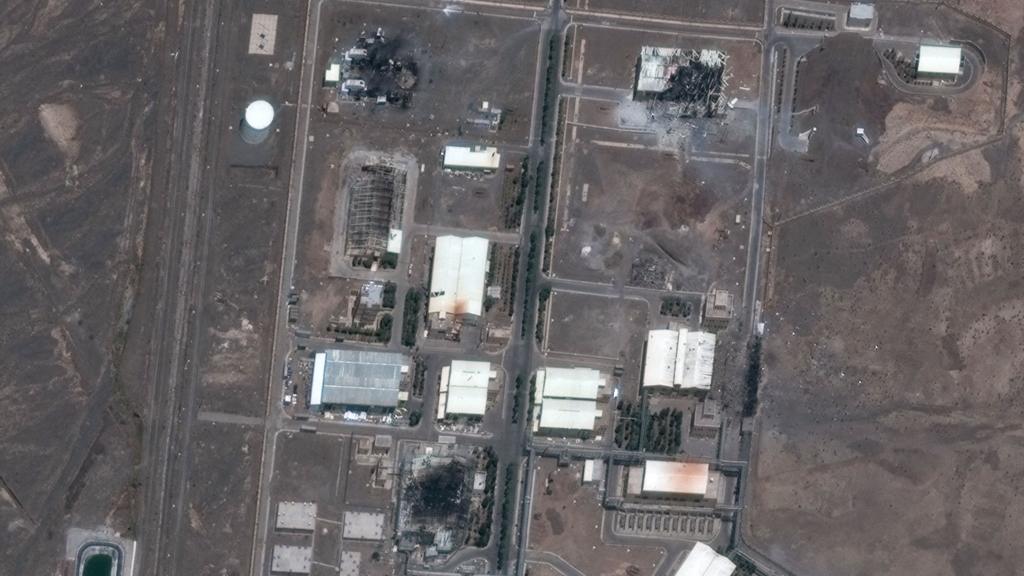The head of the International Atomic Energy Agency (IAEA), Rafael Grossi, has informed the BBC that Israeli airstrikes on Iran’s Natanz uranium enrichment plant likely caused “severe damage, if not total destruction,” to the centrifuges.
Grossi attributed the damage to power outages resulting from Friday’s attack, which he described as completely destroying the plant’s above-ground facilities. He noted that the damage occurred despite the underground centrifuge hall not being directly targeted.
Four buildings at the Isfahan site were also damaged, Grossi reported, while the underground Fordo enrichment plant showed no visible damage.
Israel claimed responsibility for the attacks, stating they aimed to halt Iran’s alleged nuclear weapons development by destroying nuclear facilities and killing nine Iranian scientists. Israel asserted that Iran recently “took steps to weaponize” its enriched uranium stockpile, a material usable for both nuclear power and weapons.
Iran maintains its nuclear program is peaceful and called on the IAEA’s 35-nation board to strongly condemn the Israeli strikes. Grossi stated to the BBC, “Our assessment is that with this sudden loss of external power, in great probability the centrifuges have been severely damaged if not destroyed altogether. There was almost total damage to electrical installations.”
Grossi previously informed the IAEA’s board of governors that the agency closely monitored the situation, assessing the status of Iranian nuclear facilities and radiation levels through communication with Iranian authorities. He confirmed that Friday’s attack on Natanz destroyed the above-ground Pilot Fuel Enrichment Plant (PFEP), where centrifuges produced uranium enriched to 60% purity— nearing weapons-grade levels.
While the underground cascade hall remained physically intact, Grossi noted that the power loss likely damaged the centrifuges. He also reported radiological and chemical contamination at the site, although off-site radiation levels remained normal. The Israeli military claimed damage to the underground centrifuge hall but offered no evidence.
Grossi detailed the destruction of four buildings at the Isfahan Nuclear Technology Centre, including a chemical laboratory, uranium conversion plant, reactor fuel manufacturing plant, and a uranium hexafluoride conversion facility. Off-site radiation levels remained unchanged. The Israeli military described the Isfahan strike as dismantling facilities for producing metallic uranium, reconverting enriched uranium, laboratories, and other infrastructure.
Grossi reported minimal to no damage at Fordo and the Khondab heavy water reactor. This contradicts earlier reports from Iran’s semi-official Isna news agency which reported limited damage at Fordo. The Israeli military hasn’t confirmed strikes there.
Grossi urged restraint, warning that military escalation risks lives and increases the chance of radiological release. Iranian Foreign Minister Abbas Araghchi called Israel’s actions a “blatant violation of international law” and sought a strong IAEA condemnation. He also described Iranian missile strikes on Israel as a response to aggression.
Israeli military spokesperson Brig Gen Effie Defrin stated that the air campaign would continue to neutralize the existential threat from Iran’s nuclear project and missile array. Iran’s health ministry reported over 220 deaths from Israeli strikes, while Israeli authorities reported 24 Israeli deaths from Iranian missiles.
Last Thursday, the IAEA declared Iran in breach of its non-proliferation obligations for the first time in 20 years due to its failure to provide full answers about undeclared nuclear material and activities. The 2015 nuclear deal with world powers restricted Iran’s uranium enrichment to 3.67% and prohibited enrichment at Fordo for 15 years. However, following the US withdrawal from the deal in 2018 and the reimposition of sanctions, Iran increasingly breached these restrictions, resuming enrichment at Fordo and accumulating enough 60%-enriched uranium for potentially nine nuclear bombs, according to the IAEA.
While Israel’s air campaign may temporarily hinder Iran’s nuclear program, it is unlikely to destroy it completely. Satellite imagery reveals damage to buildings at two missile sites and an airport runway.
The conflict began with Israel’s Friday strikes on Iranian nuclear targets, prompting Tehran to declare it a ‘declaration of war’. The UN human rights chief condemned Israel’s “means and methods of warfare” for inflicting “horrifying, unconscionable suffering”.
Social media videos show fuel shortages and traffic congestion as people attempt to leave Tehran.

